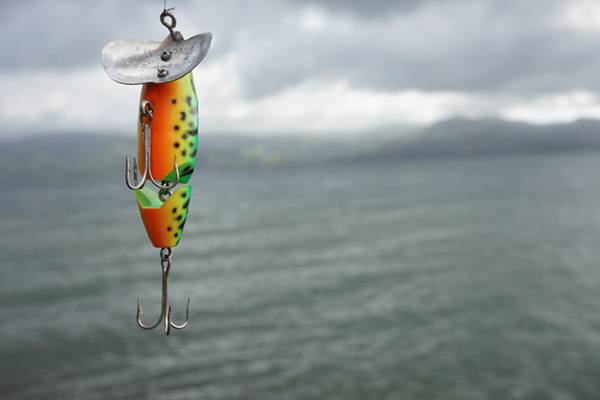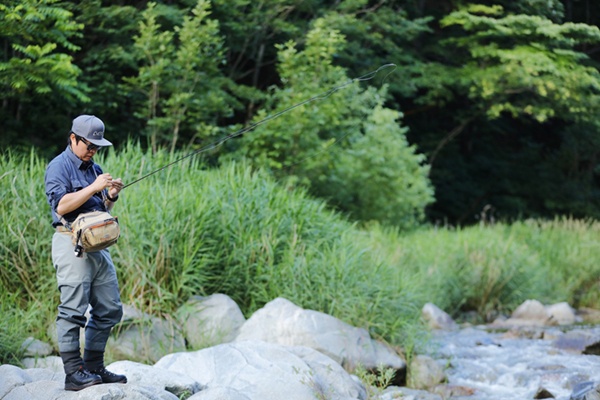Image surce: pixabay
Did you know there are dozens of different types of fishing hooks? While many look relatively similar, with the familiar curve at the bottom and the pointed, barbed end, everything about your fishing hook will affect what type of fish you catch, how many, and whether you end up with a tasty fish dinner, a trophy on the wall, or both.
According to Australian archeologists, the earliest hooks ever discovered are somewhere between 16,000 and 23,000 years old. Fishing hook technology has come a long way since then, however. Picking the right hook for your fishing goals will play a huge role in your ability to enjoy the experience and keep on reeling them in.
Dozens of Fishing Hook Options

Image source: pixabay
Most fishermen will tell you they prefer just a few types of fishing hook. Their selection will usually hinge on what type of fish they are trying to catch. However, in reality, there are dozens of options. One guide indicates there are 21 major categories of hook. Another claims there are more than one hundred distinct options with assorted variations in each category. For our purposes, we will attempt to subdivide these hooks based on what type of fisherman you are and what type of fish you hope to catch.
All-Around Basics
For the beginning fisherman or anyone who likes to keep things simple, that classic hook-and-barb fishing hook is a great place to start. This hook is often known as a “worm hook” because it makes the process of baiting the hook with a worm relatively easy. Since these hooks are specifically used for largemouth and smallmouth bass, speckled trout, and even some types of lake perch, it will pay off for you to use a hook that makes attaching a wiggling worm as easy as possible. Most of these fish will strike on a minnow or a variety of lures, and this type of fishing hook makes it easy to attach any of these bait varieties.
Within the all-around hook-and-barb category, you will also find:
- Flipping hooks, which are designed to “set” in a fish’s mouth after a quick, jarring bite
- Plastic frog hooks, which look nothing like a frog but are actually tailor-made to enable you to easily bait the fish hook with a frog
- Lightweight rig hooks designed to help your bait float temptingly just off the bottom of the river or lakebed
- Multi-barbed hooks, sometimes called treble hooks or simply bait-holder hooks, that work well for any type of cut bait or lures
- Aberdeen hooks, which help keep your live bait alive and lively as long as possible by inflicting minimal damage on your worm, minnow, or other attraction
- These hooks are also good for bottom-fishing, since they do not snag easily on weeds or other debris where fish like to hide
For a fisherman hoping to catch a variety of fish or seeking to make the fishing experience simple and successful for a young protégé, these all-around basic fishing hooks should expedite the baiting process and keep your line in the water attracting tasty fish.
Game Fish Fishing Hooks
If you want to do some serious fishing for game fish like salmon and trout, the multi-barbed hooks mentioned above may be a good starting point for you. However, game fish, appropriately given their involvement in sport fishing, tend to have a few more specific preferences than their less-picky counterparts. Here are a few options if you plan to fight a fish before reeling it in or just insist on only catching the biggest and most challenging species:
- Circle hooks, described sometimes as being “fish friendly,” are popular for catching saltwater game fish but will work for freshwater fish as well
- Jig hooks, which feature a special shank designed to align the hook’s eye and its point for consistency
- Weighted hooks, which contain a weight in the hook’s design, make bait look safer and more attractive to a “finesse” fish
Big-Game Fishing Hooks
If your goal is to catch something big and reel it in, then you may want to forego some of the simpler models we have already discussed in favor of hooks that are quick to set, hard to lose, and break-off resistant. Here are just a few:
- Snelled hook, which reduces breakoffs while keeping your bait looking lively and natural until the very end
- Weighted snag hooks, which actually work simply by snagging passing fish as they are dragged through the water
- Dressed treble hooks, which offer multiple prongs for cut bait of any variety and plenty of “seduction” for your prey via feathers or other bright decorations
Once you have selected the type of fishing hook you wish to use, you must be prepared to rig that hook effectively. Otherwise, you may find that your perfect hook wins you no prizes at all.
3 Important Points about Rigging Your Fishing Hook
Many novice fishermen think tying the hook to the end of the line and impaling a worm on it will attract absolutely any fish in absolutely any aquatic environment. As most discover to their chagrin, nothing could be farther from the truth. Rigging your fishing hook correctly is just as important as picking the right hook.

Image source: pixabay
Consider the Fishing Hook’s Sharpness
Because sharper hooks set faster but may tear holes in the fish’s mouth if you engage in an extended struggle, you may wish to go with a slightly duller point on the hook and heavier line. However, since bass in particular often react best to thin lines and relatively light hooks, you may have to risk tearing a hole in the mouth to get a higher volume of fish on your line.
Factors In Additional “Dressing”
Just as the “dressed” treble hook comes with feathers, deer hair, or marabou accessories, your line will also need its own dressing. Remember that you will need to attach weights to keep the bait at the right level for your target fish and swivels, which help keep your bait from dragging along through the water looking dead and unappetizing. Depending on how heavy your hook, lure or bait, and associated dressing are all together, you may need to go with a heavier line just to diminish your chances of losing a fish to a line break.
Consider the Aquatic Terrain
We mentioned earlier that some hooks are better than others for avoiding snags. Some rigging methods are better for this purpose as well. If you are planning to fish in weeds or where there are lots of logs or other underground shelters for fish, you need a rigging unlikely to snag and kill your bait or break your line. This means a light line, so it is less likely to tangle, a light weight to keep out of crevices on the bottom, and weighted hooks, jig hooks, or Aberdeen hooks if those options are attractive enough to get your prey’s attention and keep it long enough to get a good bite.
How to Pick the Right Fishing Hook
Picking the right fishing hook relies on several factors, as you likely are beginning to see. You must consider your level of skill as a fisherman, your target fish for the day, any limitations on your fishing hook and rigging based on the equipment available, and what type of water in which you are fishing. Here are a few questions to ask yourself to help make sure you pick the right hook for your fishing experience:
- What am I likely to catch in this body of water?
- How skilled am I at making my bait look attractive and natural?
- How skilled am I at reeling in a fish once it is hooked?
- What is the bottom of the lake, river, or ocean like where I am fishing?
- How does my target fish prefer to take its bait?
Using the answers to these questions and referring to the fishing hook descriptions above, you should be able to identify the best hook for your successful fishing expedition.
Time To Head Out
While selecting a fishing hook is extremely important to your success fishing in any situation, remember that your main goal with the great sport of fishing is to have fun and, if you are so inclined, catch something delicious for dinner. Carefully considering what type of fishing hook to use in every situation and being willing to reevaluate your decision if the fish are not biting will play a key role in achieving a rewarding fishing experience from start to finish.
Good luck!